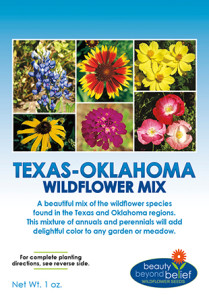Food for Fall Pollinators
Wildflower Seeds
by Sandy Swegel
Fall is a great time for birds and bears. Gardens and natural areas are full of seeds and berries for getting the calories needed for winter. Pollinators like bees, flies, butterflies, moths and insects need nectar and pollen food sources. When I was in the foothills this weekend I noticed that native sources of nectar weren’t very evident. We haven’t had much rain so some late-season flowers finished earlier. There were still tiny white aster blooms and stray late blooms of Penstemon, Liatris and Gaillardia, but this is nothing like the abundant feast of spring. Poor pollinators…Fall must be a difficult time…addicted to sugar all summer and then have it all cut off.
Fall is one time when it’s good to have nice irrigated areas with annuals and non-native plants so that you can feed the pollinators of fall who are still active. In home gardens this week I saw dozens of butterflies, bees and moths on late-season annuals like Verbena bonariensis, Cosmos, Zinnias. Our love of home gardening is very helpful to pollinators.
Cornell University released a study this year about monarch butterflies. While it is true that milkweed is the only food of the caterpillars, adult butterflies eat from all flowering plants. This time of year the monarchs need a lot of nectar and pollen to give them the strength to migrate back home. The monarchs can find nectar in areas gardened or farmed by humans.
So for those of us who love pollinators, providing some fall habitat with blooming flowers is very helpful to butterflies and all the pollinators. The longer in the season they eat, the better the chance they’ll survive winter. To get ideas for what to grow, notice what might still be blooming in wild areas and where the pollinators are actively feeding in gardens. Each year I give out awards to the plants I know for things like “First Bloom of the Year” or “Best Season Long Performer.” The last award of the growing season is “Last Bloom of the Year.” Sometime in November long after a hard frost, there is still some little single perennial flower that had several bees visiting it. Most years it is blue Scabiosa, but Borage is putting up a last-minute burst into bloom. Who won the last bloom of 2016 in your habitat?
Photos:
http://monarchbutterflygarden.net/are-native-only-wildlife-gardens-starving-fall-pollinators/
http://diet.yukozimo.com/what-do-honey-bees-eat/





